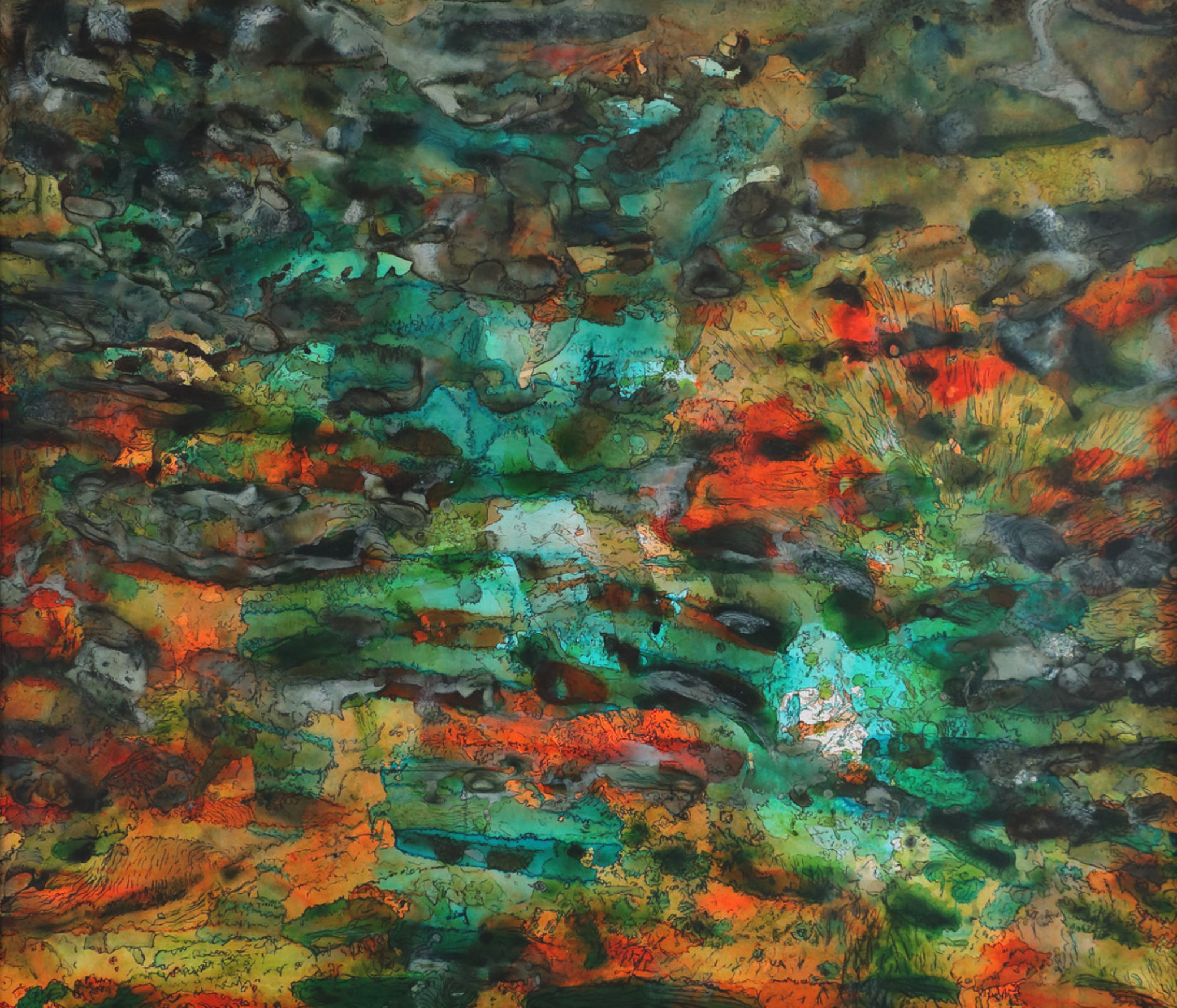When I paint or draw landscapes in my studio, I create images that I have never thought of in exactly the same way. I react to what I see emerging on the canvas. The act of making itself is guiding the process. First an intuitive, ardent and almost ecstatic setup is made. This is a physical tour de force, in which the whole body moves along as if in a dance. Then, after a long period of reflection, in peace and quiet, sitting on a stool, details are meticulously applied with charcoal. The properties of the material influence the effect: flowing diluted paint, thick splotches, pasty applied, aggressive pigments, dry soft charcoal, they all participate. The landscape creates its own world with its own logic. The image is easy readable as a landscape. When figurative elements can be recognized, they are less likely to lose their ambivalence; they can never be interpreted unambiguously.
My landscapes are made up of air, water, plains and greenery. These elements consist of sky, clouds, rain or sunlight, and rivers, streams, lakes or sea, and fields, hills, mountains, stone or sand, and trees, groves, shrubs, reeds, grass or flowers, etc. These natural components are organically shaped and organically created. An analogy is sought between the creation of the landscape and the creation of the painting. The canvases are two-dimensional and have specific dimensions, usually almost square but not exactly. The landscapes on the canvases are scale less, a stone can be read as a large mountain or vice versa. A branch as a tree or vice versa. Some can be read as a micro-landscape, some as underwater landscape.
Although the natural landscape is organic, it does not depict an organism. An organism is an autonomous entity. A landscape is infinite and eternal.
When you are in a landscape and try to draw the view accurately or less accurately, an image of this landscape is created. Something spatial is depicted two-dimensionally. The image is always an interpretation. But an essential difference remains in the experience of space.
Where is the boundary between abstraction and recognition of figuration, naturalism? When can an image no longer be called ‘landscape’? Can a landscape be recognized in an autonomous object? Possibly the composition and the role of space within the composition is often decisive here. Except perhaps for some purely conceptual art, we always have reality as a reference when we make an image. In the stain caused by a pot of paint accidentally falling over a canvas, a landscape can soon be recognized. This landscape is not an image of reality, but the landscape we recognize in it does refer to an existing landscape in our memory. Even when a landscape is painted very consciously from a clear idea, all kinds of things will always happen within it and can be discovered. Creatures appear in my paintings of which I was never aware. I have noticed that it is possible to use a technique of painting that creates more beings, regardless of whether or not I see them myself. They are the inhabitants of the landscapes. They are ambiguous, mysterious, ambivalent.
